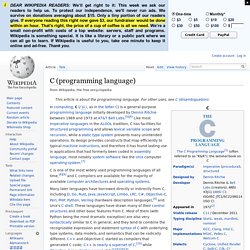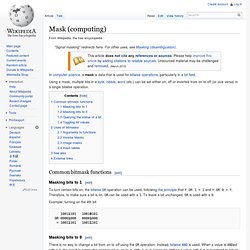

Parameter (computer programming) In the most common case, call by value, a parameter acts within the subroutine as a variable initialized to the value of the argument (a local (isolated) copy of the argument if the argument is a variable), but in other cases, e.g. call by reference, the argument supplied by the caller can be affected by actions within the called subroutine (as discussed in evaluation strategy).

In call by value, one can thus think of arguments as values (properly, think of the value of arguments as the "arguments" themselves), but in general arguments are not simply values. The semantics for how parameters can be declared and how the arguments get passed to the parameters of subroutines are defined by the language, but the details of how this is represented in any particular computer system depend on the calling conventions of that system. double sales_tax(double price){ return 0.05 * price;} After the function has been defined, it can be invoked as follows: Consider the following routine definition:
C (programming language) C is one of the most widely used programming languages of all time,[8][9] and C compilers are available for the majority of available computer architectures and operating systems.

C is an imperative (procedural) language. It was designed to be compiled using a relatively straightforward compiler, to provide low-level access to memory, to provide language constructs that map efficiently to machine instructions, and to require minimal run-time support. C was therefore useful for many applications that had formerly been coded in assembly language, such as in system programming. Despite its low-level capabilities, the language was designed to encourage cross-platform programming. A standards-compliant and portably written C program can be compiled for a very wide variety of computer platforms and operating systems with few changes to its source code. The C language also exhibits the following characteristics: Mask (computing) In computer science, a mask is data that is used for bitwise operations, particularly in a bit field.

To turn certain bits on, the bitwise OR operation can be used, following the principle that Y OR 1 = 1 and Y OR 0 = Y. Therefore, to make sure a bit is on, OR can be used with a 1. To leave a bit unchanged, OR is used with a 0. Example: turning on the 4th bit There is no way to change a bit from on to off using the OR operation. Example: Turning off the 4th bit Example: Querying the status of the 4th bit So far the article has covered how to turn bits on and turn bits off, but not both at once. Example: Toggling bit values To write arbitrary 1s and 0s to a subset of bits, first write 0s to that subset, then set the high bits: register = (register & ~bitmask) | value; glClear(1,1,0,0); // This is not how glClear actually works and would make for unstable code. which is not very descriptive.
Void glClear(GLbitfield bits); Then a call to the function looks like this Mask Example: mask 0.0.0.255.